PAVILION OF JAPAN – 55TH INTERNATIONAL ART EXHIBITION – LA BIENNALE DI VENEZIA
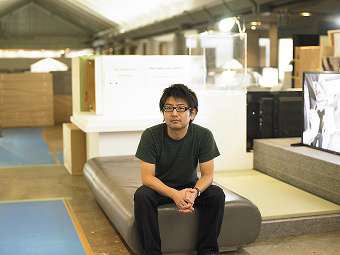
Pavilion of Japan
At the 55th International Art Exhibition – la Biennale di Venezia
abstract speaking
– sharing uncertainty and collective acts
Artist: Koki Tanaka
Curator: Mika Kuraya
(Chief Curator of the Department of Fine Arts, The National Museum of Modern Art, Tokyo)
Organizer: The Japan Foundation
Curator’s statement
The installation in the Japan Pavilion will probably come across as rather desultory: pillows and flashlights, books, jars and more, placed here and there, with glimpses of photographs and video footage in between. The log pillars and stools are a partial recycling of those used for Architecture. Possible Here?, Japan’s entry in the 13th Venice Biennale of Architecture in 2012. Near the entrance, staff overseeing the pavilion display go about their business at a worktable. Thus the photos and videos that would ordinarily occupy center stage as the “works” slip among the furniture and everyday items (the actual objects that appear in the photos and videos), and the staff, as items of equivalent standing.
In recent years Koki Tanaka has employed a variety of methods to produce works on the relationality that arises between human beings. For these works, he either 1) sets a specific group a certain task and videos their collaboration, or 2) does something with somebody based on an idea not yet completely formed, and records this in photos and text.
Nine hairdressers cutting the hair of one person, five musicians composing on a single piano, five poets writing a single poem, multiple ceramicists producing a single item of pottery—these fall under 1), video footage. In them, it is possible to see the process of people of the same occupation, employing a common language that only they understand, clashing with each other, reaching consensus, and so on (incidentally the driving force behind this process is the question of the division of space between the participants, almost a formal matter). On the other hand, belonging to 2) are what Tanaka calls “collective acts”: experiments of various sorts still lacking a fixed destination, such as talking about one’s own name while eating emergency rations, and walking in a large group around the nighttime streets, flashlights in hand.
On 11 March 2011, Japan experienced a massive earthquake and tsunami, plus an accident at a nuclear power plant.
Two years on, the situation still remains unresolved, an issue that Japanese artists continue to engage with in various forms. Architecture. Possible Here?, presenting a plan to build a house for residents of a town hit by the disaster, was one direct manifestation of this engagement. By reusing part of that exhibition site, Tanaka is attempting to address the same issue, but in a slightly more abstract fashion.
For example, a haircut by 9 hairdressers at once (second attempt) (2010) was shot before the earthquake. But to those of us in Japan now, having gone through such a definitive experience, it seems a metaphor for working together to build a post-quake society. Or take the footage of people going up and down a fire escape with a book in one hand: this recalls the experience of evacuating, and has the feel of an anti-nuclear power gesture (in the sense of rejecting the consumption of electricity concomitant with escalators and elevators). Thus the tasks and acts—at first glance modest—set by Tanaka can be read in different ways according to the viewer’s personal context. Having this quality of permitting many different readings, Tanaka’s works will, at the geographically far removed Venice venue, provide a platform for the overlaying of yet more, new readings by people. In any case, on entering the Japan Pavilion, with the text “9478.57km” (indicating the distance from the Fukushima Daiichi Nuclear Power Plant to the Japan Pavilion) added unobtrusively next to the sign saying “GIAPPONE,” even if they are unaware of it, the connections between countless viewers shouldering all sorts of contexts has already begun.
Mika Kuraya
Curator, Japan Pavilion
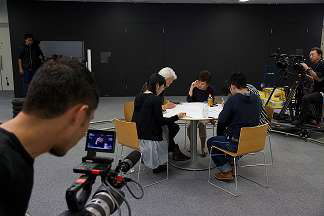
HD video 68 min 30 sec
Commissioned by The Japan Foundation
Equipment support: ARTISTS’ GUILD
About the artist
Born in 1975; currently lives and works in Los Angeles. In his diverse art practice spanning video, photography, site-specific installation, and interventional projects, Koki Tanaka visualizes and reveals the multiple contexts latent in the most simple of everyday acts. In his recent projects he documents the behavior unconsciously exhibited by people confronting unusual situations, e.g. a haircut given by nine hair stylists or a piano played by five pianists simultaneously, in an attempt to show an alternative side to things that we usually overlook in everyday living.
He has shown widely in and outside Japan: the Hammer Museum (Los Angeles), the Mori Art Museum (Tokyo), the Palais de Tokyo (Paris), the Taipei Biennial 2006 (Taipei), the Gwangju Biennial 2008 (Gwangju), the Asia Society (New York), the Yokohama Triennale 2011(Yokohama), the Witte de With (Rotterdam) and the Yerba Buena Center for the Arts (San Francisco). He will participate in “2013 California-Pacific Triennial” at the Orange County Museum of Art in June 2013.
Artist website: http://www.kktnk.com/
About the Curator
Chief Curator of the Department of Fine Arts, The National Museum of Modern Art, Tokyo, Mika Kuraya earned her MA at Chiba University. Her recent curatorial projects include: “Waiting for Video: Works from the 1960s to Today” (2009, The National Museum of Modern Art, Tokyo; co-curated with Kenjin Miwa), “Lying, Standing and Leaning” (2009, MOMAT), “Meaningful Stain” (2010, MOMAT), “On the Road” (2011, MOMAT), “Undressing Paintings: Japanese Nudes 1880-1945” (2011-2012, MOMAT). Recent critical studies include: “Where is Reiko? Kishida Ryusei’s 1914-1918 Portraits” (Bulletin of the National Museum of Modern Art, Tokyo, No. 14, 2010).

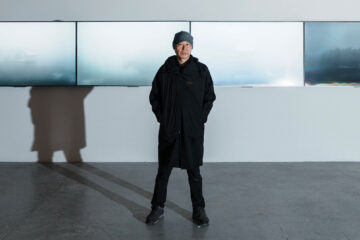
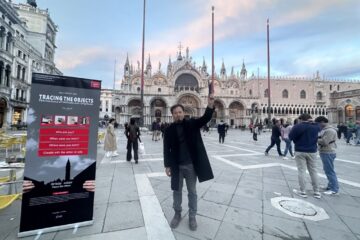

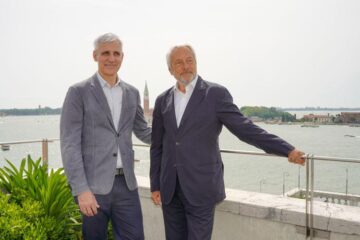

No Comment